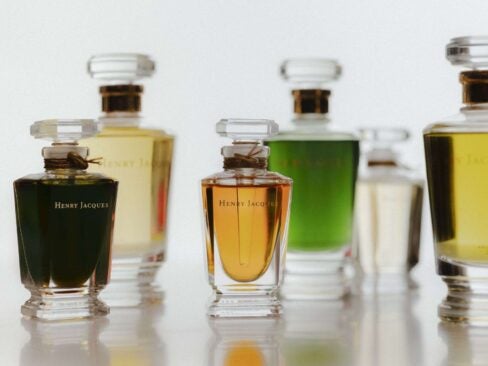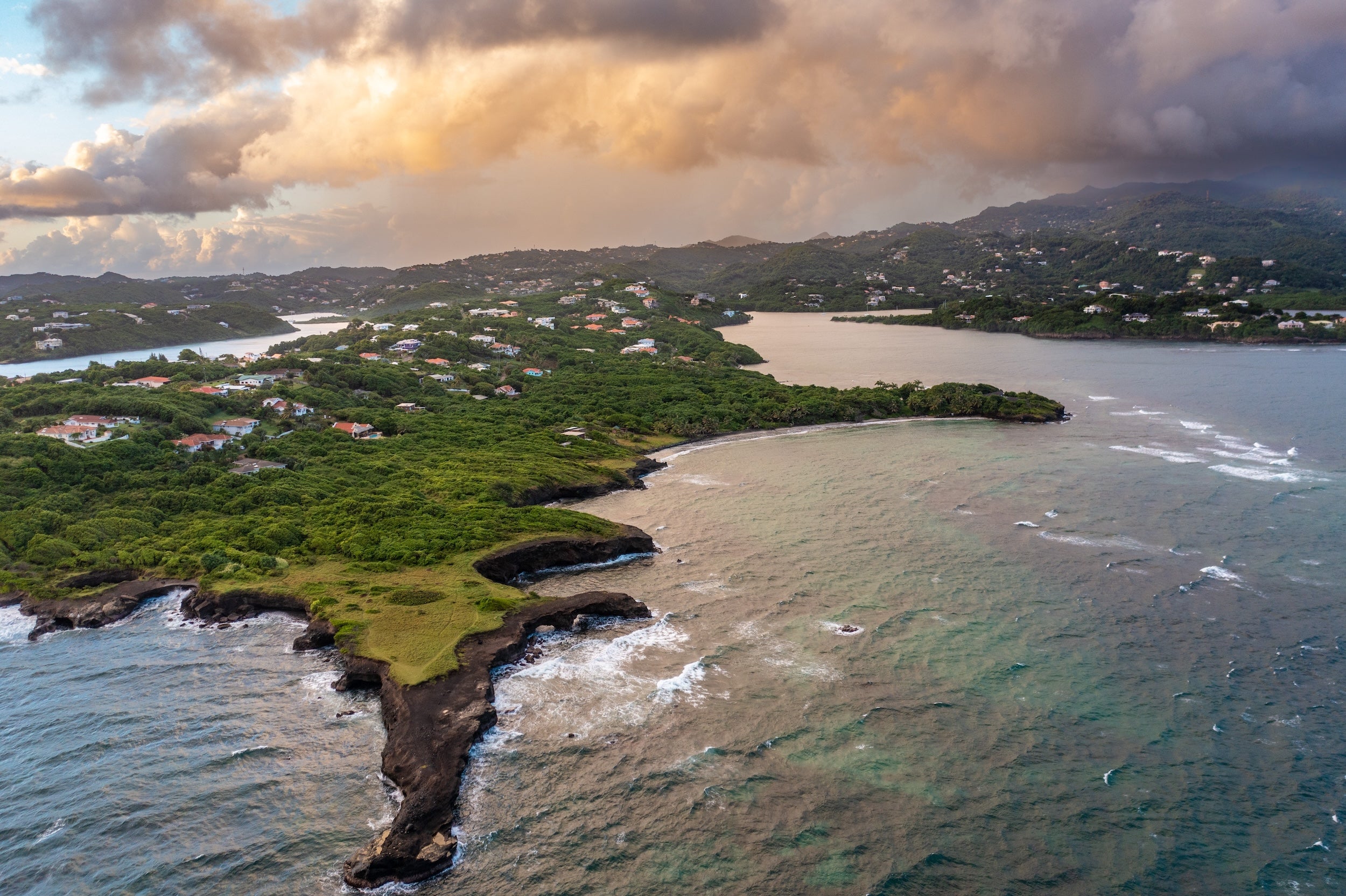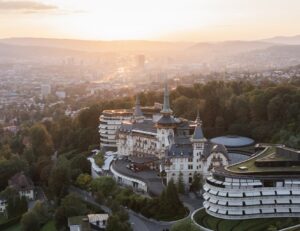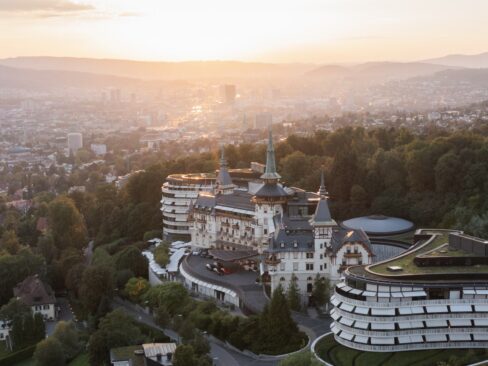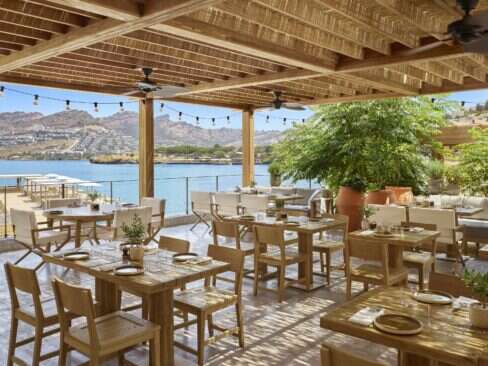Theresa Marryshow points at her callaloo growing vigorously in a lush row.
The popular spinach-like leaf of the dasheen (taro) plant is cultivated in irrigation canals that were originally dug by slaves when it was part of a 750-acre estate once owned by The Bank of England. The estate’s last owners subdivided the land in the 1980s, giving it away to workers, with one particularly bucolic two-hectare corner ending up with Marryshow, where she has created an organic market garden to beat them all.
Edged by a bubbling brook and ringed by banana, papaya and coconut trees, it looks like something out of a fairytale. It’s no surprise that a visit here is on the must-do list for every food-loving visitor – mine organized by the newly opened Six Senses La Sagesse, which she supplies with produce.
Marryshow, a retired government agriculturist, and president of the now 100-member Grenada Network of Rural Women Producers, never tires of showing it off, spreading the word as we continue to chat over a stellar farm breakfast of moringa fritters, assorted freshly picked salad leaves, and coconut water. This year the garden celebrates its 25th anniversary.
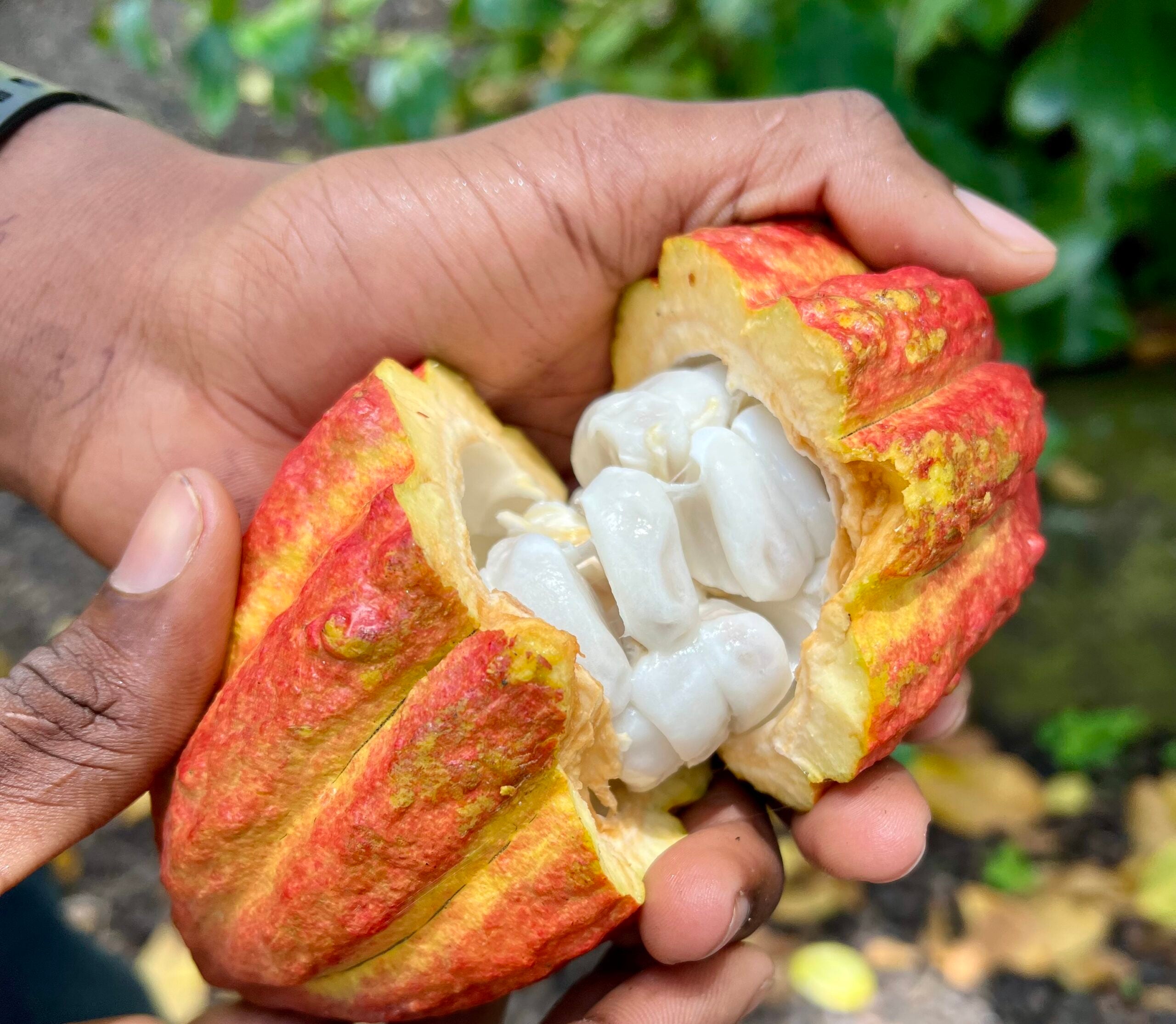
Unlike other Caribbean countries, which import most of their produce, growing your own in Grenada is the norm. Sustainability is part of a Grenadian’s DNA; they use only what they need and recycle everything. When the pandemic set in, and Grenada became isolated, like many other islands, cooperative farming took a hold, each grower specializing in various fruit and vegetables that ripen at different times, so market stalls were always full. It has proved such a success that Grenada now has the potential to feed itself and its guests sustainably.
We think about Marryshow the next morning at breakfast as we tuck into her vividly yoked eggs, alongside a spoonful of celery sauerkraut, slow-roasted carrots and a cup of soursop tea, all locally grown and all bursting with flavor, delivered by a hotel brand that leads the way in sustainable practices, and now virtually plastic-free.
In fact, I’m about to embark on a couple of such practices myself – first, a spiced sauerkraut cooking class with executive sous chef Gayan in the hotel’s Fermentation Lab, the products of which will end up on the menu in about three months’ time; then a bowl of mango sorbet eaten in its Scoop Café, which makes clever use of kitchen waste. “These days people want to know where their food comes from, and what happens to the leftovers,” says Gayan.
Feeling good about the environment certainly brings on a peace of mind. Though maybe it’s the local soursop tea that’s helping me sleep better, as our lovely breakfast server suggests. To find out more, we stop by Laura’s Herb & Spice Garden to get the lowdown on the island’s multitude of herbs, spices and fruits with their impressive medicinal benefits. The island is known famously as ‘The Spice Isle’ and is the world’s second-largest producer of nutmeg after Indonesia. Our guide Lorraine confirms soursop’s sleep-inducing qualities. “It’s good for the prostate too,” she tells my partner Mark, pointing out that another island staple turmeric will work wonders on his joints as knees crack on the steep slope back to base.
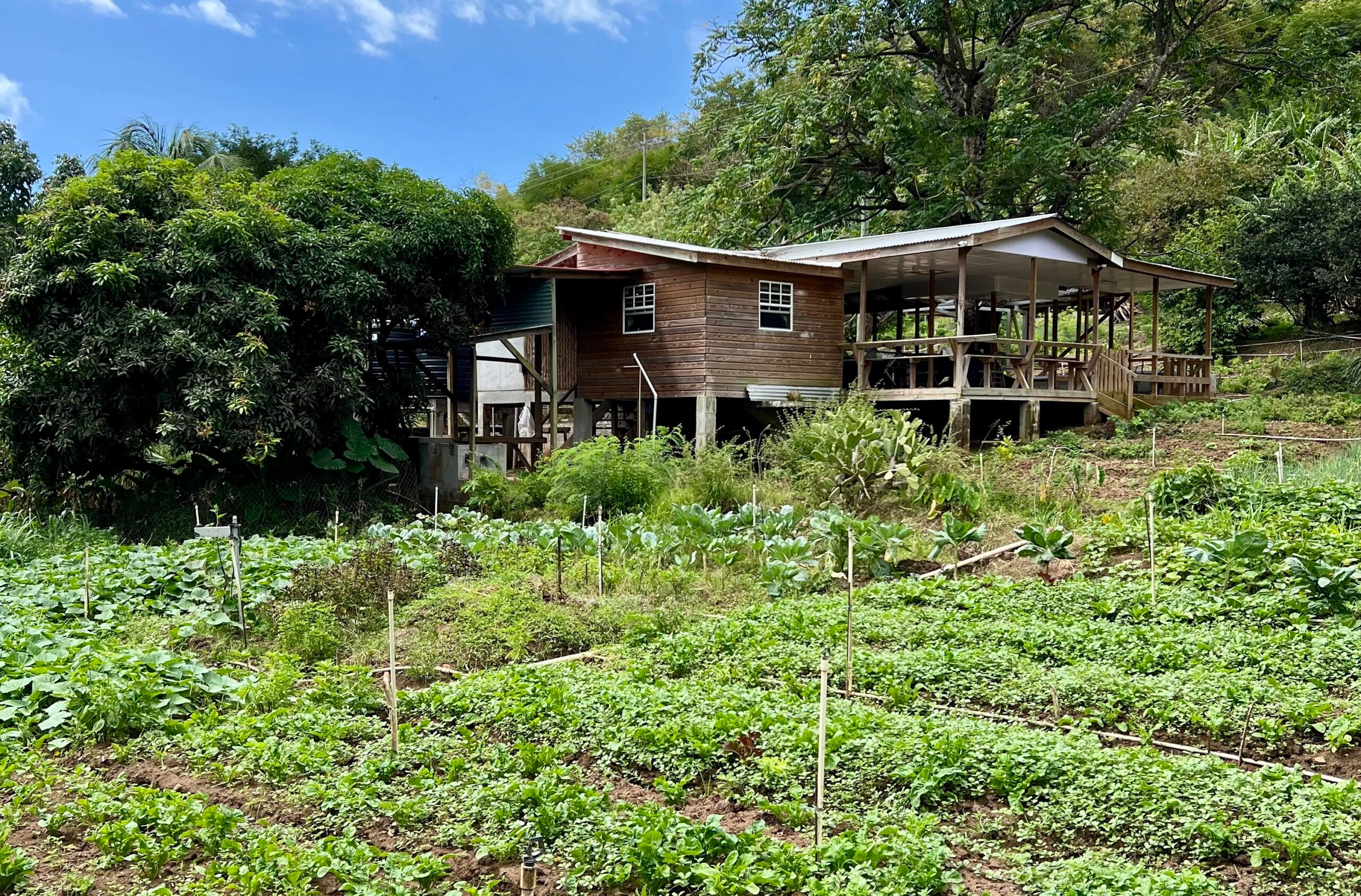
Winding north up the west coast to the picturesque seaside town of Victoria we hit the Nutmeg Museum to discover more about the island’s famous aromatic spice, learning that you can use the whole seed, grating the shell for drinks, or use it as an attractive mulch for flower beds. Then we re-trace steps to the capital St George’s to view the spice in the bustling market, where our mission is to choose any produce that we like the look of for executive chef Jason Joseph at our second island home, Mount Cinnamon Beach Resort.
With its enviable position overlooking Grenada’s acclaimed Grand Anse Beach, Mount Cinnamon offers a different kind of chef demo – we choose the lunch ingredients and chef creates the dishes. And Joseph doesn’t disappoint, whipping up an elegant take on local favorite ‘stew fish with provisions”, after a silky coconut and pumpkin soup.
It takes a few laps of the bay to make room for a seven-course dinner at Joseph’s inaugural Chef’s Table, the first of its kind in Grenada, and well worth the experience even if you aren’t staying here. “There’s a story behind each of these ingredients,” he enthuses, finishing a lobster bisque with a few drops of lemon oil.
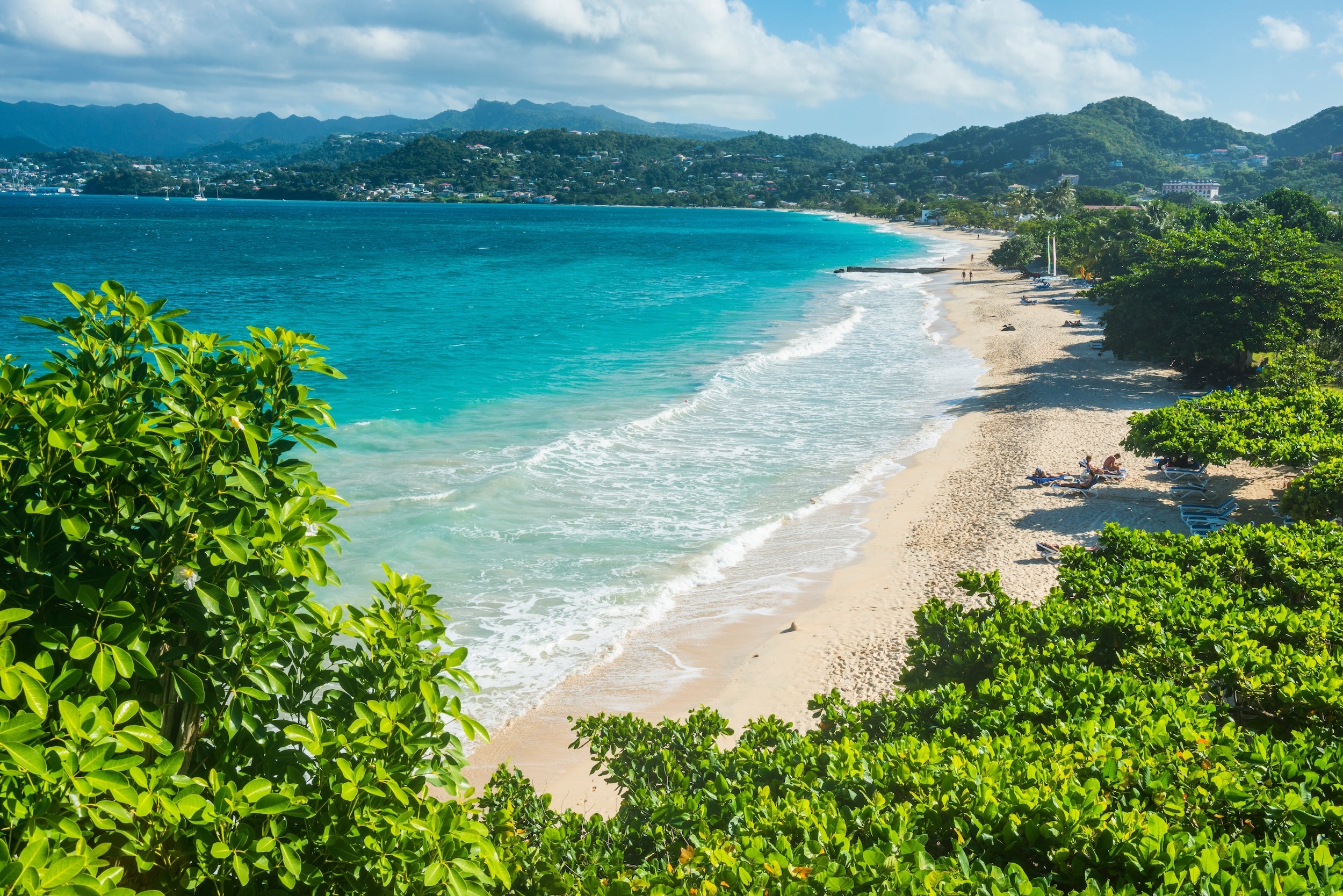
For a maximum of six guests, Joseph thrills with his creative take on local dishes using all island-grown produce – highlights include a crispy fish roulade with turmeric and ginger cream and pimiento-infused local duck breast with smoked butternut squash puree, orange marmalade and pomegranate jus.
This came after a tasting with mixologist Steffon Charles, who had lined up some of his favorite rums. “You can’t leave without an understanding of Grenada’s rums,” he insists. It would be irresponsible to mention the name of the mouth-numbing, alarmingly over-proofed white rum, so instead I’ll applaud the classy, 10-year-old 10XO Westerhall rum, with its rich tobacco, coffee, spice and honeyed flavors.
There are five distilleries on the island, with Westerhall and Clarke’s Court the major players, exporting around the world. We passed both on our way to La Sagesse, but my vote goes to the 1785-established River Antoine Distillery on the east coast, boasting the oldest functioning water mill in the Caribbean. The resulting rum is funky, fiery and highly sought after by rum cognoscenti, and hugely popular with locals when combined with grapefruit soda Ting (ask for a Rivers & Ting). Though rum punch still rules here, and everyone has their own take on the iconic Caribbean cocktail.
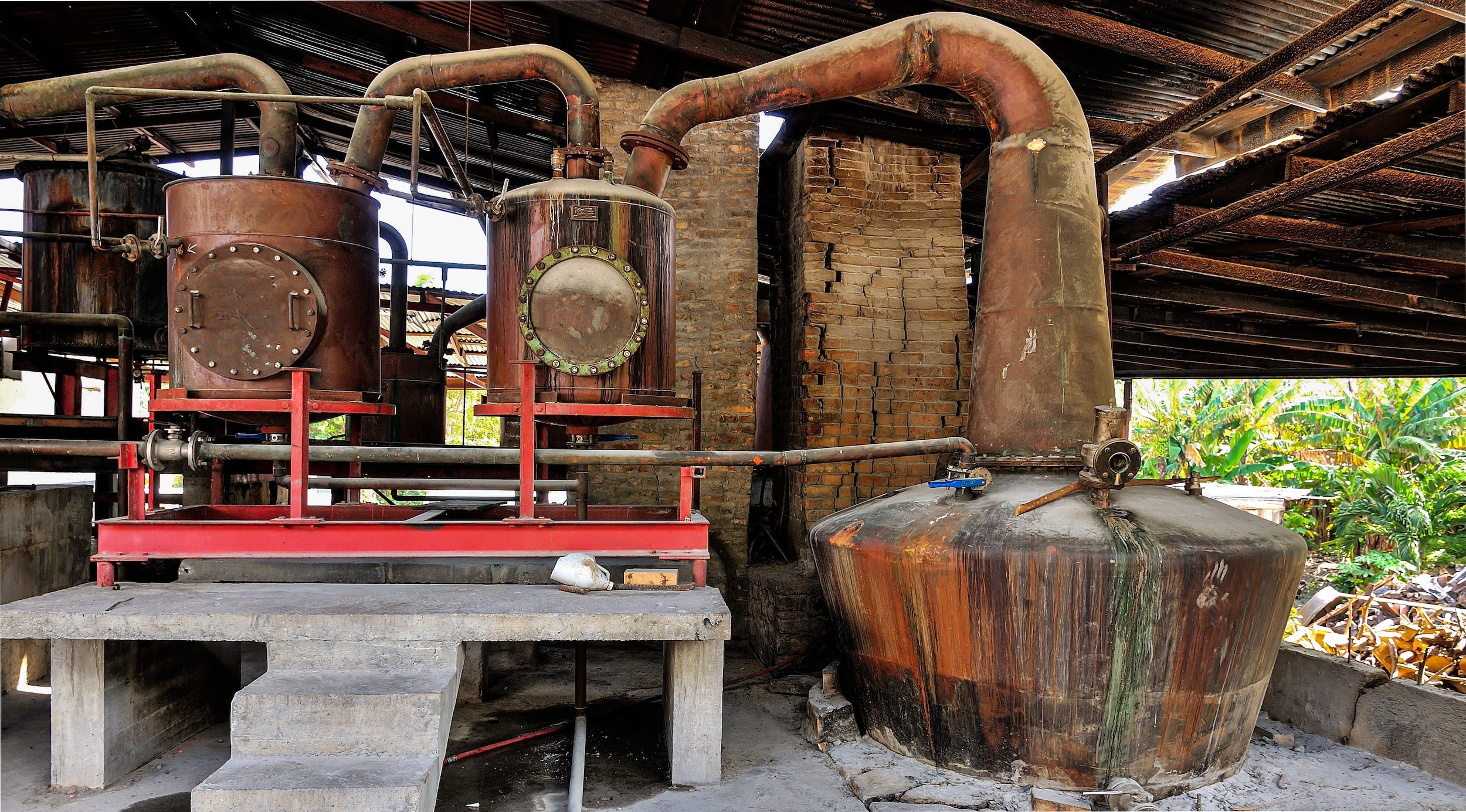
Best rum punch in Grenada? The consensus, in my admittedly rather limited poll, is Esther’s Bar on Grand Anse, a rickety, rainbow-colored bar in the spice market just off the beach that makes its own syrups to flavor it. “It’s certainly my favorite – after our own of course,” grins Ramces Castillo, the executive chef at the swanky Spice Island Beach Resort, our last stop of the trip.
At Spice Island, they take farm-to-table seriously. The organic herb and vegetable garden on the stunningly situated beachfront property is huge, seedlings and all, the aroma of ‘Shadow Benny’ (a type of coriander) scenting the air. It was the brainchild of the resort’s managing director Janelle Hopkin who wants to take sustainability to a new level, which chimed well with Mexico-born Castillo’s way of thinking.
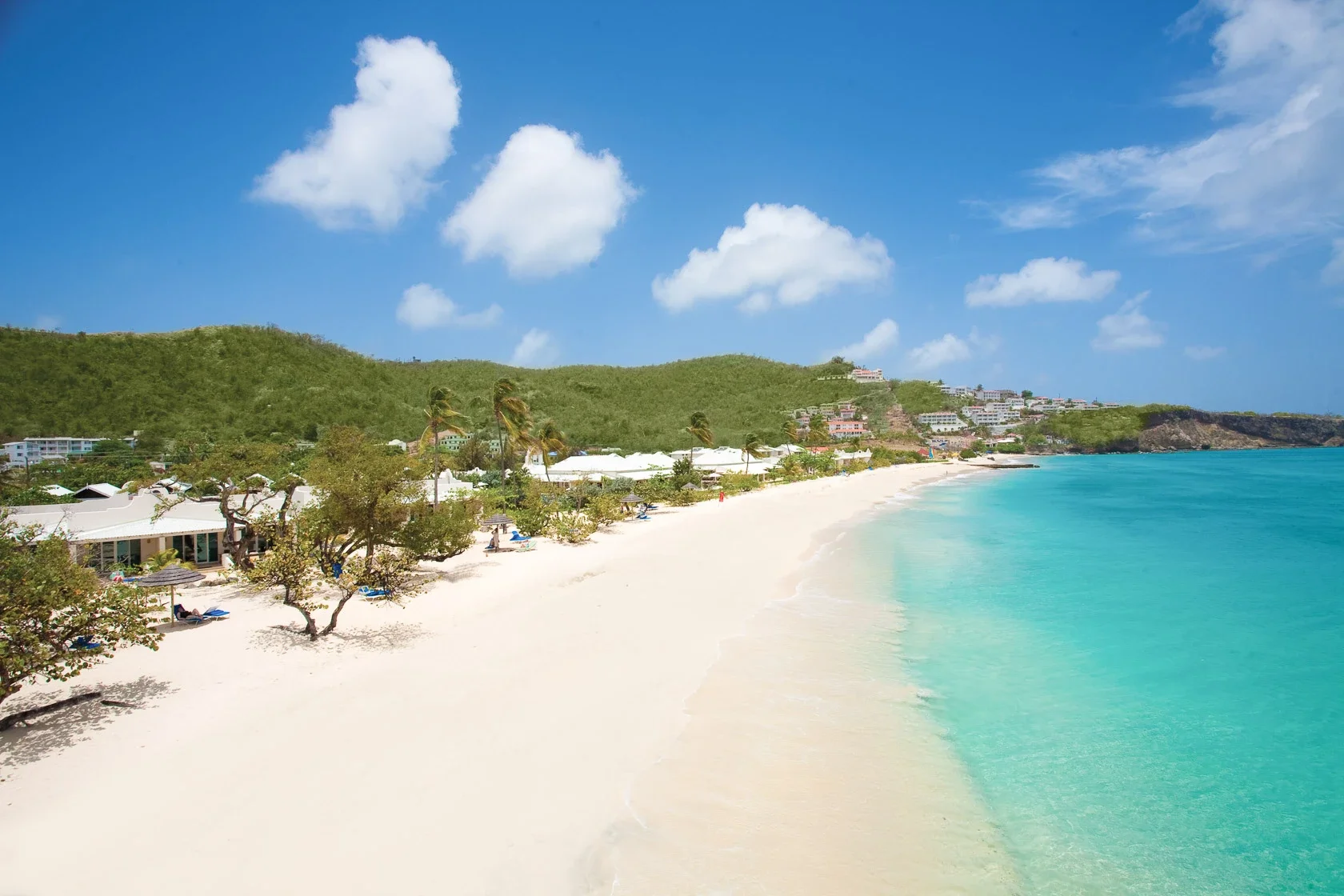
“Grenada is a playground for chefs. The island produces way more food than other Caribbean islands, helped by the rich volcanic soils. The flavors are just incredible,” he enthuses, showing off his cocoa pod-decorated chef’s jacket, a self-confessed chocolate addict.
When I last visited the island a decade ago there was just one chocolate producer, The Grenada Chocolate Company. Now there are five.” We visit one of chef’s favorite producers the next day, The Diamond Chocolate Factory, housed in a former sugar mill in Victoria, majority-owned by a group of Grenadian cocoa growers, snapping up its Jouvay dark chocolate studded with cocoa nibs.
The nibs make it into Castillo’s star dish – tuna with a cocoa nib crust, a cocoa butter-rich dasheen puree, spiced sorrel sauce and spice-rubbed grilled papaya, which we eagerly scoff after watching him cook. The tweezered micro greens finishing the dish were grown by the hotel’s Experience Manager Fabian, who supplies Castillo and other chefs on the island. Like I said, everyone is growing their own here, which for me, and many others, is the ultimate luxury. That, and the Bentley ride back to the airport in the hotel’s superior shuttle.




